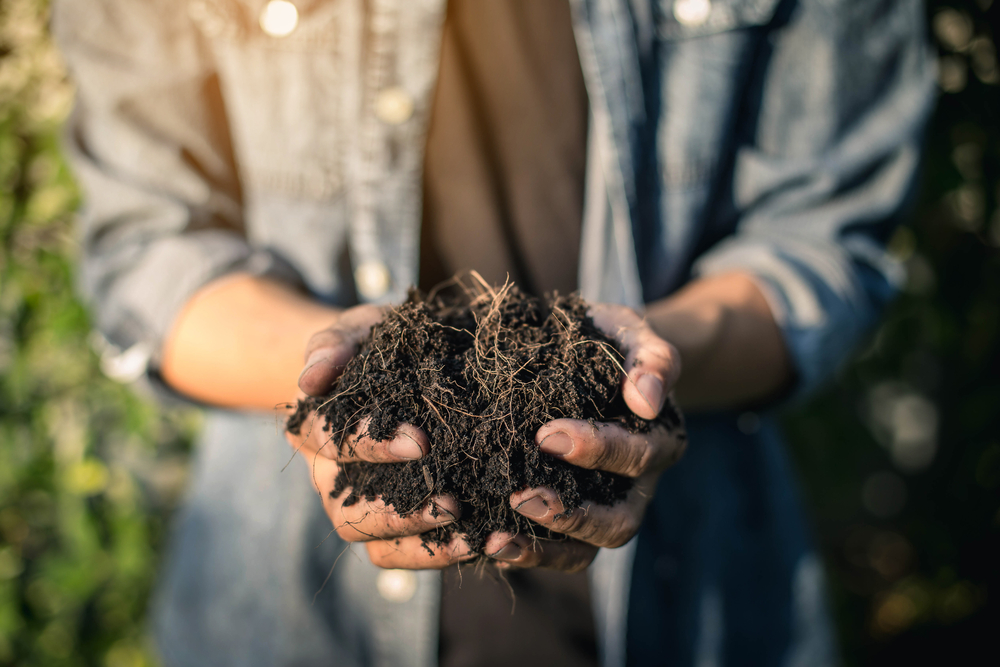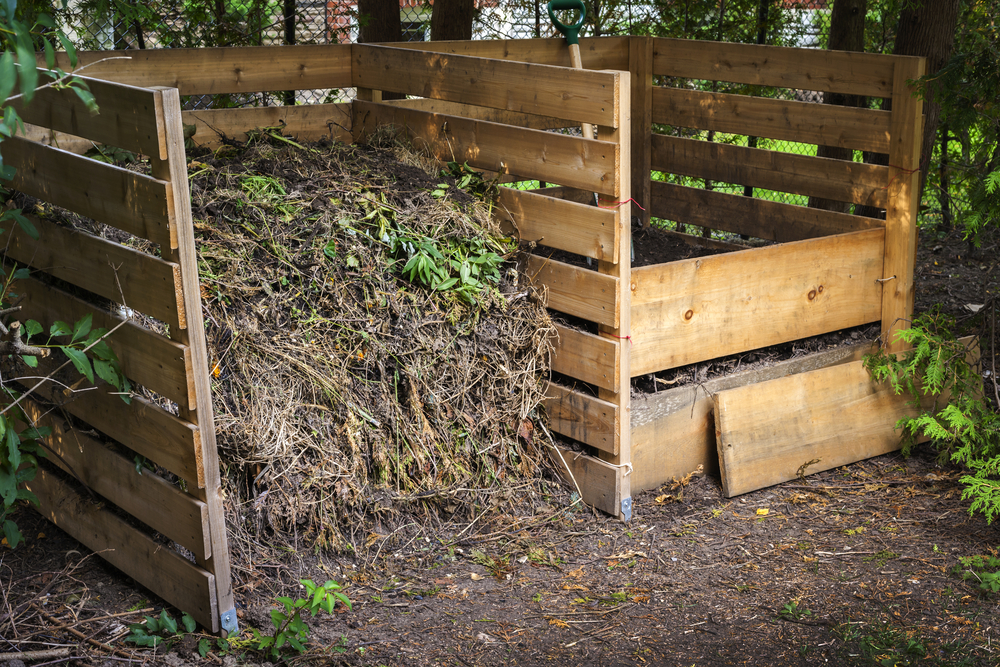
one
two
three



Composting is the process of using microbes to break down organic matter into a rich, fertile, humus. This composted material, referred to as compost can then be used to enrich your landscape and encourage your plants to grow.
Compost adds organic matter to the soil. This organic matter becomes fertilizer for the plants around it. In addition, mixing compost into the soil makes room for water to trickle in and soak the soil instead of running off. Adding organic matter to the soil each spring keeps it fertile and loose.
Compost also helps aerate the soil. The irregularly shaped particles make space for air and keep the soil from compacting. Roots need oxygen to grow, and adding organic matter makes sure there is enough oxygen in the soil for the roots. Compacted soil, on the other hand, doesn’t have many spaces for air to penetrate.
The pH of finished compost is usually between 6-8. The “finished” is important. Compost that is unfinished can adversely affect your plants. How do you tell if compost is finished? Grab a handful of it. There should be a uniform brown color and no lumps. It should smell like good earth. If you can see a leaf fragment or piece of manure, the compost is not finished. If the compost has an unpleasant smell, it is not finished.
Compost can be used in two ways. When first developing a landscape bed, you should till the soil to a depth of twelve inches. Layer three inches of compost on top of the soil. Mix the compost throughout the tilled soil. Now you have rich, aerated soil full of organic matter.
If your landscape bed is older, with plants already in it, you can top-dress the soil with compost. Layer about an inch of compost over the soil in the landscape bed in the early spring. Cover this with three inches of mulch. The compost acts like a slow-release nitrogen fertilizer. You can top-dress turf grass with an inch of compost if you then rake the grass with a leaf rake to make the compost fall to the ground.

Making compost is not hard. You are essentially farming microbes that will turn your food and yard waste into rich organic matter. The best way to make compost involves a three-bin system. Make three bins with the front open. In the first bin goes the raw food and yard waste. Once a month, you turn the contents of the second bin into the third bin. You then turn the contents of the first bin into the second bin. The third bin should contain the finished compost after three months. Each compost pile should be between three and five cubic feet. Smaller piles do not have the mass to stay warm and larger piles do not have enough air for the microbes.
The best compost piles come from a simple recipe. You want browns and greens plus moisture. Browns (carbon sources) are dry leaves, wood chips, straw, hay, newspaper, and sawdust. Greens (nitrogen sources) are grass clippings, coffee grounds, fruit and vegetable waste, fresh hay, manure, and seaweed. Do not compost meats, oils, and bones, as they will attract rodents and other vermin to your pile.
Repeat steps one through four until the pile is big enough to compost.
Making a compost bin and composting your waste can take time. Turning and spreading the compost can also be labor intensive. Royal Creations Architectural Landscaping can help. We develop landscape beds and mix in compost, so you do not have to. We even provide the compost, made where it gets hot enough to sterilize any weed seeds or pathogens in the pile. Our Garden Care Team will also come out in the spring and top dress your landscape with compost, then mulch, to keep your plants growing well and your landscape looking sharp. Contact us today to schedule our services.